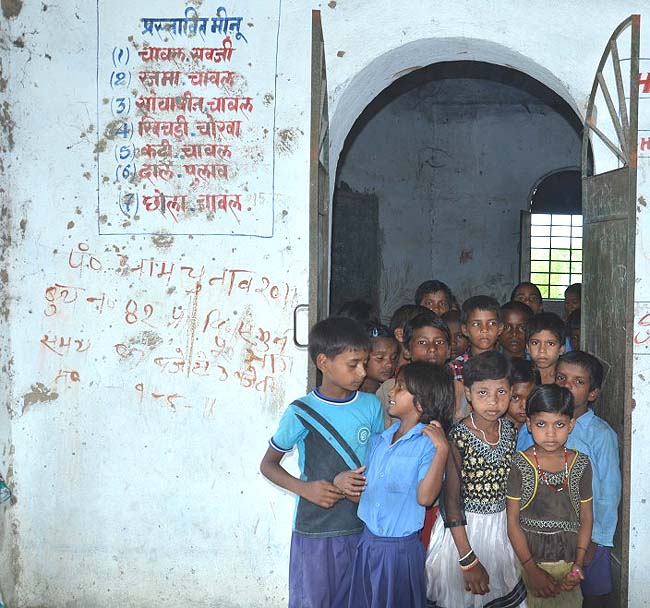|
21/07/2013
Stop Disastrous Governance Failure
Forthwith
Usher in Transformational
Changes in Delivery Management Architecture
|
For last five years, the state government has been sleeping on the earnest request to overhaul its delivery management system. Having firsthand experience of the way the present delivery system works in Bihar, I had been strongly advocating an alternate approach on deliver management in all available forums, including in my columns, public consultation and also through grievance redressal mechanisms set up by the state government. Regrettably, I have not seen any meaningful progression on my suggestions. The unfortunate tragedy caused by failure of the delivery management system has once again highlighted the major chinks in the process. With public gaze still riveted on this disastrous failure of present delivery mechanism, it would be perhaps an opportune moment to draw the attention of the authorities to the alternative system. As such any delivery mechanism will at the minimum involve three key actors, viz: Consumer, Provider and Regulator. In general, consumer uses the goods and services and typically pays for it where as provider supplies these goods and services and gets paid for it. Regulators job is to ensure a fair play between consumer and supplier. However, government deliver mechanism typically breaks down this system. Most of the time, it is government who is the provider and a result gets paid for rendering services and offering goods. Again it is government who is the indirect consumer as it pays for using the services and goods to provider directly. Regulator in such delivery mechanism is also government. Thus government itself is responsible for paying for its services and goods and regulate it to. No wonder delivery mechanism has been failing with such an alarming regularity or rather has been a perennial failure. Thus, seeds of the failure are very much seeded in the design of such delivery mechanism. In a welfare state, government has a responsibility to pay for consumption by the people. Then how a delivery mechanism can be structured to avoid such pitfalls? There is some answer to this quandary. The proposed alternative system veers around creating a rather failsafe delivery mechanism in the sense that failure to deliver would be counterproductive for provider. It relies on creating a Chinese wall between consumer, provider and regulator. In the alternate mechanism an entitlement is created in favour of intended consumer, whether individually or as a well defined group of people. Decision to release the payment on satisfaction of its entitlement is taken by those ‘individual’ or ‘the group’ consumer as the case may be. An Automated Entitlement Release Authorization System can also be implemented to facilitate hassle free entitlement release by consumers. This will ensure that provider does not get paid till he delivers the services/ goods to the satisfaction of intended beneficiary that is consumer. People who constitute provider get paid only if they successfully deliver the entitlements to consumers otherwise not. Providers can again be agencies at an arm’s length distance from the government. Regulators role should be to monitor and adjudicate so as to ensure fair play. Regulators should also be equipped with an elaborate supervision management framework and also an Automated Supervision Management System. Fourth actor in this delivery mechanism would be off course the office of CAG providing an independent assessment on working of this mechanism. Government’s direct role should be confined to policy formulation and laying down the procedures. Automated Entitlement Release Authorization System: This can be in don using a biometric identification system or smart cards issued to beneficiary. Using a WI FI POS device managed by regulators, c consumers can accord their consent to release their entitlement on due satisfaction of the same. Automated Supervision Management System: An enterprise EGRC system can be used for facilitating the same. This system can be employed for:
Automated Supervision Management can be employed by Regulator for Implementing Integrated Supervision process management. CAG can also be better off with such a system in place. Top authorities would have online real time dashboard which will feed them on all emerging developments, as would require their supervisory intervention. Let us consider three worked example here, two involving individual consumer and another involving group consumer.
1. Mid Day Meal Scheme- In this scheme, entitlement is to be created in favour of students. Provider of the food would be the contractor engaged by Mid Day Meal Agency set up for this purpose. Regulator can be education department. Coupon system or electronic authorization mechanism can be implemented to ensure that release of grains and fund to contractor is against the coupons or the electronic certification by student/parent of the student. Regulator would keep a watch that there is no collusion or coercion whereby without having Mid Day Meal, student authorizes release of the fund certifying satisfaction of entitlements. Since each student is responsible for authorizing payment against his entitlements, student can decide not to release his entitlements whereby automatically attracting intervention from regulators. If regulator fails to operationalize SOP his responsibility gets fixed. Thus, accountability is ensured at the level of regulator. Payment is released to provider only when the release of entitlements is counter certified by the regulator. Release can be withheld by regulator only where he can prove collusion or coercion.
2. MNREGS: Consumer/ beneficiary of MNREGES should be work department of governments that is Rural Engineering Department, Forest Department, Agriculture Department, Disaster Management Department, Minor Irrigation Department or Water Resources Department. Regulators can again be DM and DDC of the concerned districts. Such a structuring will ensure that there is no collusion between Rozgar Sevaks and Rozgar Seekers, whereby they share the wages between them without having to execute any work. In proposed architecture, work departments will act as a counter for such collusive practices.
3. PMGSY Roads: Beneficiary or Consumer of PMGSY can be a well defined group instead of individual like Ward or Panchayat. Executing agency for same would be the implementing agencies like Rural Engineering Department, NPCC or NBCC etc. Elected head of ward or Panchayat would have to release the entitlement in favour of implementing agencies that is Rural Engineering Department, NPCC, NBCC etc. Thereafter funds can be released to these agencies. DM and DDC can act as regulator for such a program.
|




